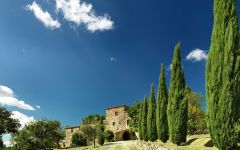Ruffino Unoaked Chardonnay 2012


Product Details
Your Rating
Somm Note
Winemaker Notes
Earthy, nutty, and green apple Chardonnay flavors shine through since the wine does not undergo oak aging. Excellent balance and a long, crisp finish.






In 1877, Illario and Leopoldo Ruffino laid the foundations of their dream to make the most known and loved Italian wines in the world from the heart of Tuscany. At their winery in Pontassieve, just outside of Florence, they began producing wines according to a strict quality standard and a rigorous technical research. Soon, Ruffino became an international symbol of the Chianti region, and won numerous awards, including the prestigious gold medal at the Bordeaux Wine Fair in 1895, affirming the quality of its wine.
In 1913, the Folonari family purchased Ruffino and brought new talent, energy and enthusiasm into the company. They started on a nearly century-long pursuit to develop a collection of estates in Tuscany, all of which matched the standard of quality and uniqueness which was the trademark of Ruffino wine.
Over the last sixty years, Ruffino has established seven prominent estates in Tuscany, all situated within the major DOCG production regions including Brunello di Montalcino, Vino Nobile di Montepulciano, Chianti and Chianti Classico. Today, Ruffino continues to meld century-long Tuscan traditions with new state-of-the-art cellar technology and modern winemaking for an ideal symbiosis with the energy of the contemporary Italian lifestyle.

One of the most popular and versatile white wine grapes, Chardonnay offers a wide range of flavors and styles depending on where it is grown and how it is made. While it tends to flourish in most environments, Chardonnay from its Burgundian homeland produces some of the most remarkable and longest lived examples. California produces both oaky, buttery styles and leaner, European-inspired wines. Somm Secret—The Burgundian subregion of Chablis, while typically using older oak barrels, produces a bright style similar to the unoaked style. Anyone who doesn't like oaky Chardonnay would likely enjoy Chablis.

One of the most iconic Italian regions for wine, scenery and history, Tuscany is the world’s most important outpost for the Sangiovese grape. Tuscan wine ranges in style from fruity and simple to complex and age-worthy, Sangiovese makes up a significant percentage of plantings here, with the white Trebbiano Toscano coming in second.
Within Tuscany, many esteemed wines have their own respective sub-zones, including Chianti, Brunello di Montalcino and Vino Nobile di Montepulciano. The climate is Mediterranean and the topography consists mostly of picturesque rolling hills, scattered with vineyards.
Sangiovese at its simplest produces straightforward pizza-friendly Tuscan wines with bright and juicy red fruit, but at its best it shows remarkable complexity and ageability. Top-quality Sangiovese-based wines can be expressive of a range of characteristics such as sour cherry, balsamic, dried herbs, leather, fresh earth, dried flowers, anise and tobacco. Brunello, an exceptionally bold Tuscan wine, expresses well the particularities of vintage variations and is thus popular among collectors. Chianti is associated with tangy and food-friendly dry wines at various price points. A more recent phenomenon as of the 1970s is the “Super Tuscan”—a red wine made from international grape varieties like Cabernet Sauvignon, Merlot, Cabernet Franc and Syrah, with or without Sangiovese. These are common in Tuscany’s coastal regions like Bolgheri, Val di Cornia, Carmignano and the island of Elba.
